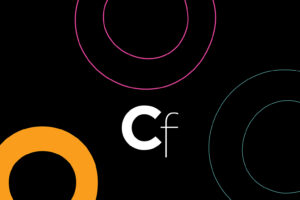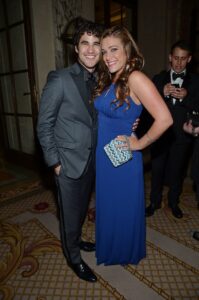Beyond the worker bees: How F37’s billboard campaign ditched the Manchester clichés


Campaign lead Ellen Ling explains why the launch of new font Mancunio avoided Factory Records nostalgia in favour of hyperlocal sarcasm.
At Creative Boom, we’re passionate about Manchester. It’s where we were born, where we continue to thrive, and somewhere we’d encourage anyone and everyone to visit. But we’ll be the first to admit that Manchester has a problem with its own mythology.
For decades, the city’s creative identity has been wrapped up in the same tired tropes. Worker bees. Yellow and black colour schemes. Endless references to Tony Wilson’s Factory Records era. So we were overjoyed to see a recent city-wide campaign for the launch of F37’s Mancunio typeface deliberately turn its back on these well-worn clichés… choosing instead to celebrate the city’s sharp wit and hyperlocal humour.
Factory was 40 years ago
Creative copywriter Ellen Ling, campaign lead on the project, is refreshingly direct about why they chose this approach. “It’s like 40 years on,” she says of the Factory Records legacy. “There’s nothing wrong with it, but we’re living here day in, day out, and you just see it a lot. Particularly in corporate campaigns, or on hoardings for new developments—which are not going to be marketed to, or bought by, anyone local.”


The campaign, which she led for font foundry F37, was born from an unusual discovery. The typeface itself was modelled on Manchester’s last-surviving original wooden signs, hidden behind railway brambles at St Michael’s Place. “There are some really lovely details in it,” explains Ellen. “Particularly the S and the C.” The name comes from Mancunio, the Roman fort that once stood in what’s now Castlefield.
Rather than launch with typical design industry fanfare, F37 wanted something that gave back to the city that inspired it. “The brief came to us with a lot of stuff of what they didn’t want,” recalls Ellen, who collaborated with designer Craig Oldham on the project. “It said: We don’t want bees near it. We don’t want it to be yellow and black. We don’t want to lean into the established Tony Wilson references.”
Deadpan humour
The solution was a black-and-white billboard campaign that leaned heavily into Manchester’s characteristic blend of sarcasm and sincerity. “We chose black and white really quickly because we were like, it’s right for the sense of humour. It’s right for that sort of deadpan,” Ellen says.
The team also drew inspiration from John Carpenter’s 1988 sci-fi horror film They Live and its iconic ‘obey’ aesthetic.
In short, the campaign’s nine hero messages, displayed across six billboard locations and social media, were designed to entertain rather than sell. “We wanted it to be like, what’s this for?” Ellen explains. “It was kind of a bit of fun. Suppose no one looks at the font; cool. At least you’ve made an impact and got people talking.”


This approach paid off spectacularly with one particular execution. One billboard poking fun at Simply Red sparked a heated debate on LinkedIn, with dozens of comments defending the maligned Mancunian pop group. “I love it so much,” Ellen laughs. “Just people being so staunchly protective.”
Perhaps the campaign’s standout moment, though, came with its tribute to Boombox Barry, a beloved local character who spreads joy around the city’s parks with his portable sound system. “He’s someone that passes by this office,” Ellen explains. “He’s often in the park with his boombox. We were like, if there’s a way that we can do something for him…”
Consequently, the largest billboard in the campaign was dedicated to Barry. This required the team to track him down for permission, a charmingly old-school process involving phone calls and meetings in the park.
Authentic outsider perspective
Ellen’s approach to the campaign was informed by her own experience as a transplant to Manchester. Originally from London and adopted, she found herself drawn to the city’s distinctive character. “It’s that sarcasm and sincerity, but also irreverence and not taking itself too seriously, and always this understated confidence,” she reflects. “Confident in any room at any level, and a real put-you-at-ease quality.”
This outsider-insider perspective was crucial to the campaign’s success. “You can insult somewhere because it’s yours,” Ellen notes, acknowledging the delicate balance required. “That sarcasm had to come from the right place, a good place.”


The campaign also addressed Manchester’s ongoing gentrification with characteristic wit. One billboard declared, ‘Stockport is the new Berlin, Prestwich is the new Paris, nowhere is the new Manchester’ – a pointed response to the trend of comparing emerging areas to established cultural capitals.
“For all its faults or the way that it’s evolving at the moment, actually, nowhere can be a replica,” Ellen says. “It’s a one-off. Not for reprint.”
Moving beyond nostalgia
Perhaps the campaign’s greatest achievement is proving that Manchester’s creative identity doesn’t need to rely on its past glories. While respecting the city’s musical heritage, the work carved out space for a new, more authentic approach to local pride, one that’s simultaneously loving and ruthlessly honest.
“If you’re going to say something nice, then it has to go the other way,” Ellen explains of the campaign’s philosophy. “You don’t want to give them too much.” This reflects something essential about Manchester’s character: the city’s ability to celebrate itself while staying firmly grounded.
“We’ve always loved how Manchester carries its history in everyday places, like old street
signs tucked away in quiet corners,” adds F37 founder Rick Banks. “This campaign isn’t about being loud; it’s local-first, subtle and authentic, with smart, warm type designed for those who truly understand what makes this city unique.”
When asked to define Manchester’s unique appeal, Ellen admits it’s hard to describe. “It’s something I felt like a big connection to from the minute I thought about moving here,” she explains. “There’s a warmth, humour, embrace. It’s a great city made more wonderful by its people.”
In an era of corporate place-making and developer-led regeneration, the Mancunio campaign stands as a reminder that the best way to capture a city’s spirit isn’t through its official branding or tourist board slogans but through the sharp wit and genuine affection of the people who call it home. No worker bees required.




